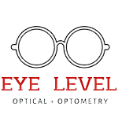
Eye Healthcare Industry is concerned about Myopia Progression – Here's Why
Myopia usually occurs when the eye's focusing power increases, it is either due to the cornea curve being more curved than normal or when the eye is simply too long. As a result, when people with myopia look at distant objects, the light rays focus in front of the retina and not onto it, which causes the objects' appearance at a distance to be blurred or not at crisp. While in adults, it is significantly easier to diagnose, in kids, the signs are not as evident and require keen attention to be diagnosed. While symptoms do vary from person to person, Myopia usually kicks in around the age of puberty for most individuals. Myopia slowly gets worse and worse as they age, and the myopia progression starts in full bloom.
Prevalence of Myopia Progression
As readily evident, Short-sightedness has many long-term repercussions if not treated timely and is one of the most common eye disorders in the world. The statistics show that this worrisome eye condition prevails in adults roughly 30 to 40 percent in the United States and Europe. In contrast, nearly 80% of the adults in East Asian countries are affected by this. As per an estimate, the condition is to become widely spread by the year 2050. A research paper published in the journal Ophthalmology states that nearly half the world would be short-sighted by 2050. To quote accurate figures, 4.8 billion people will be nearsighted, roughly 49.8 percent of the world's population.
This is why it is safe to say that Myopia Progression is a major concern for ophthalmologists and the eye healthcare industry alike. It has been a major cause of concern, and with a large number of people being readily affected by it, treatment and eyewear are the first priority. To confirm the state of Myopia, we suggest getting in touch with an eye specialist at the earliest. After a confirmed diagnosis, the treatment plan can be created according to your need in order to halt myopia progression and other related diseases.
Classification Of Myopia Severity
The disease itself has many severity levels, which can be measured in diopters or D, a measuring optical unit. The case of Myopia in a patient is reflected with a minus sign, which indicates that it is indeed short-sightedness. The lens power used to treat Myopia is usually, but not necessarily measured in 0.25 D increments. For this eye condition, many prescription lenses can be used depending on the severity of the condition. The extent of nearsightedness is often categorized like this:
- Mild Myopia: -0.25 to -3.00 D
- Moderate Myopia: -3.25 to -5.00 D or -6.00 D
- High Myopia: greater than -5.00 D or -6.00 D
As a general remark, mild Myopia does not pose many health problems for the individual and does not open up any gateway for other eye health problems. However, much like any other disorder, this eye condition is to be treated to prevent its progression, irrespective of being negligible. Moderate and high level of severity of Myopia opens up the possibility of many other serious problems, which can become vision threatening and may have multiple side effects on the individual's overall health.
High Myopia is also called degenerative Myopia or pathological Myopia and is an eye condition in adults who had the disorder from a young age. It is usually the result of common signs being ignored or overlooked, or mild myopia being untreated, which resulted in myopia progression over the years of neglect.
Eye Healthcare Industry Seek Myopia Control
While a black and white cure for nearsightedness does not exist, eye specialists do recommend various forms of treatments. Usually, the treatment of myopia progression revolves around changing the structure and focus of the eye to reduce stress and fatigue associated with the development of Myopia. It should interest you to explore the possible cure and rectification options by the eye healthcare industry and get an initial consultation.
Early diagnosis can help in treating Myopia before myopia progression becomes a problem. One common form of treatment is wearing corrective eyeglasses. Vision correcting eyewear is easy to use and has no side effects; using prescription glasses regularly can halt myopia progression and even more troublesome problems like retinal detachment. Here are some other forms of treatment
- Eye Wear
- Contact lenses
- Atropine eye drops
- Orthokeratology ("ortho-k")
It is best to get a confirmed diagnosis from the eye specialist before investing in treatment. You may opt for long-term or short-term solutions based on the severity of the problem. Irrespective, it is essential to seek help for yourself or anyone in your social setting which shows signs of Myopia.

